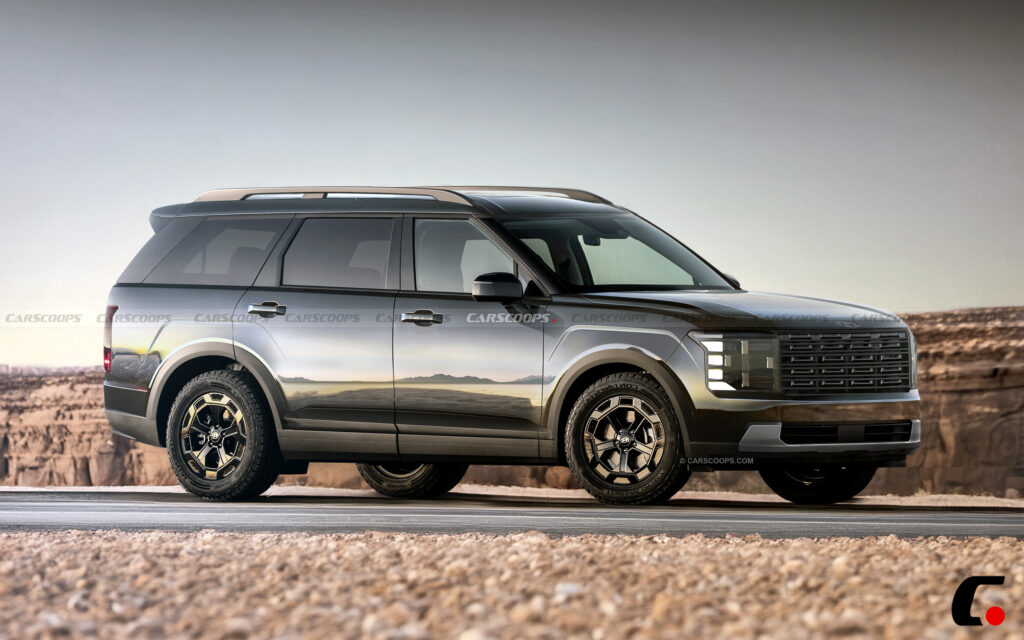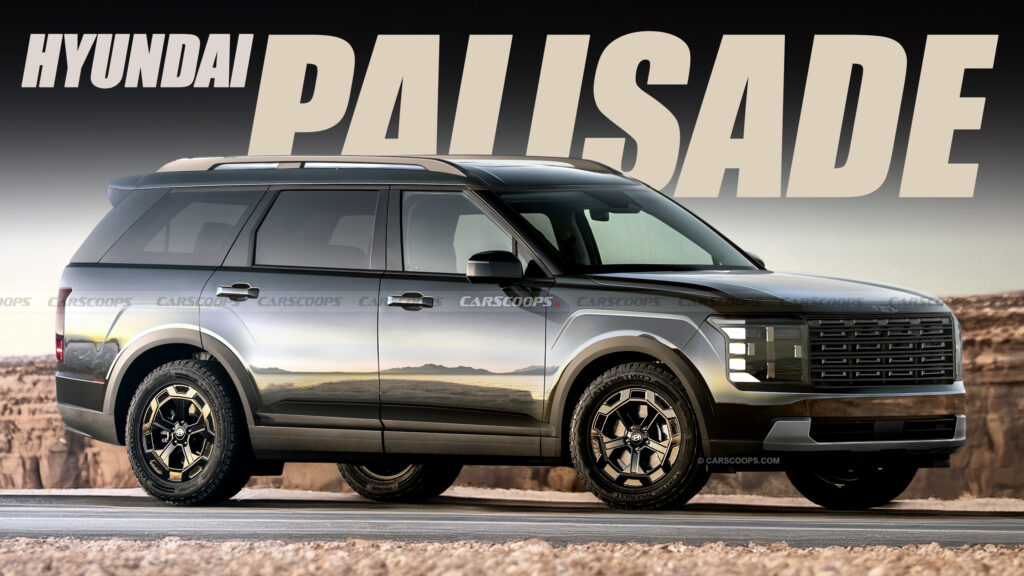- The Hyundai Palisade is getting a major redesign for the 2026 model year.
- The mid-size SUV will feature a more boxy design, inspired by the Santa Fe.
- The interior will be upgraded with a larger digital display and more advanced tech.
Hyundai has been undergoing a design renaissance lately, with edgy new products like the Kona, Elantra, Santa Cruz, and its entire Ioniq EV lineup successfully standing out from an arguably mundane crowd.
More: What We Know About The 2026 VW Atlas SUV
Next up for an aesthetic overhaul is their largest and hot-selling SUV, the mid-size Palisade. As our sleuths behind the lens reveal, the 3-row crossover trades smooth lines for a boxy new look. Curious for more details? We’ve decoded the camouflage to offer you the most revealing preview yet.
A Boxy Beaut
The outgoing Palisade was quite an attractive thing, yet its replacement ups the ante with a squared-off appearance that takes the best elements of the new Santa Fe and melds them into an astoundingly visually dominant package.

Starting at the front, the fascia sports a massive rectangular grille and blocky headlamps with segmented DRL elements to emphasize the square aesthetic. Unlike the ruler-inspired Santa Fe, the bodywork is far more streamlined with carefully placed creases, lower body cladding, and fuss-free C- and D-pillar detailing.
Also: What We Know About The Next-Gen 2027 Mitsubishi Pajero SUV
Looking at the profile, the daylight opening area adopts cues from the Range Rover school of design, with a two-tone, floating roof and blacked-out pillars (some variants will be available with chrome/silver trim). Further back, the rear sports a chiselled tailgate with a large spoiler and hidden tailpipes.
Upscale Interior


The interior largely mirrors Hyundai’s upcoming Ioniq 7 electric SUV and has a light and airy ambience with ovoid-themed door panels, door handles, and other trim elements. A seven-seat configuration and a second-row captain’s chair arrangement are available.
A gigantic curved digital instrument cluster and infotainment display dominate the dashboard, and leather-trimmed seats, door cards, and the dashboard add a touch of luxury. Three USB-C charging ports are located in a semi-floating center console arrangement ahead of the cupholders.
Tech goodies include Apple CarPlay and Android Auto, wireless charging, intelligent cruise control, a 360-degree camera system that doubles as a blind-spot camera, and ambient lighting.
The Important Bits

Reports from South Korea last year suggested the new Hyundai Palisade would ditch its existing 2.2-litre four-cylinder turbo-diesel and 3.8-litre V6 gasoline engines with a pair of turbocharged replacements to fill the gap.
Under the bonnet, expect a 2.5-liter four-cylinder turbo gas engine paired with a hybrid system. There’s talk about a larger, turbocharged 3.5-liter V6 that will easily surpass the 291 hp (217 kW / 295 PS) of the current naturally aspirated 3.8-liter engine, but this has not been confirmed.
Read: The Next-Generation 2025 Nissan Murano
It will also grow to provide more space for second and third-row occupants. The current model measures 4,995 mm (196.9 inches) long, 1,975 mm (77.8 inches) wide, and 1,750 mm (68.9 inches) tall, with a 2,900 mm (114.2 inches) wheelbase.
Rivals and Reveal
Key rivals, aside from its corporate sibling the Kia Telluride, include the VW Atlas, Toyota Grand Highlander, Mazda CX-90, Honda Pilot, Subaru Ascent, Ford Explorer, and Jeep Grand Cherokee L.
Expect the new Palisade to debut late this year or early next as a 2026 model, since the current version already occupies the 2025MY slot. The new Palisade will be joined by a three-row electric SUV, possibly named Ioniq 7 or Ioniq 9. Built on Hyundai’s new E-GMP platform, this SUV will serve as Hyundai’s counterpart to the Kia EV9.
What do you think of the Palisade’s boxier aesthetic? Tell us in the comments below.





